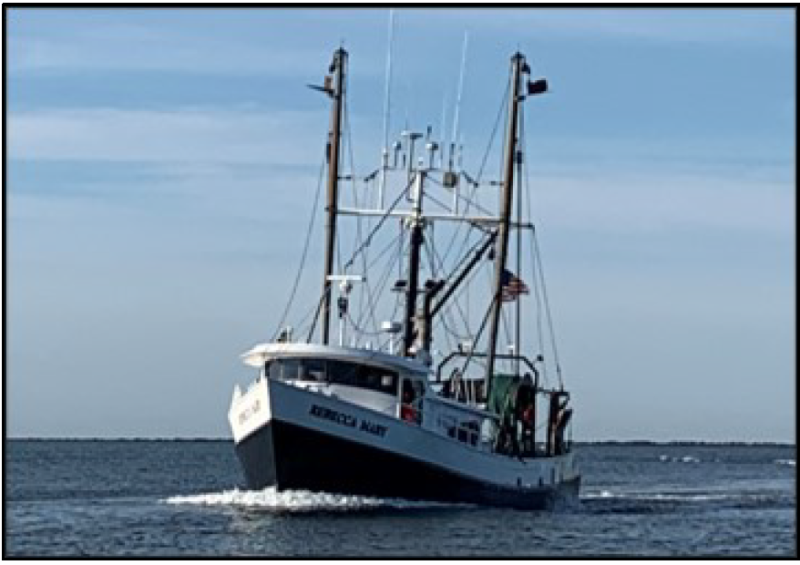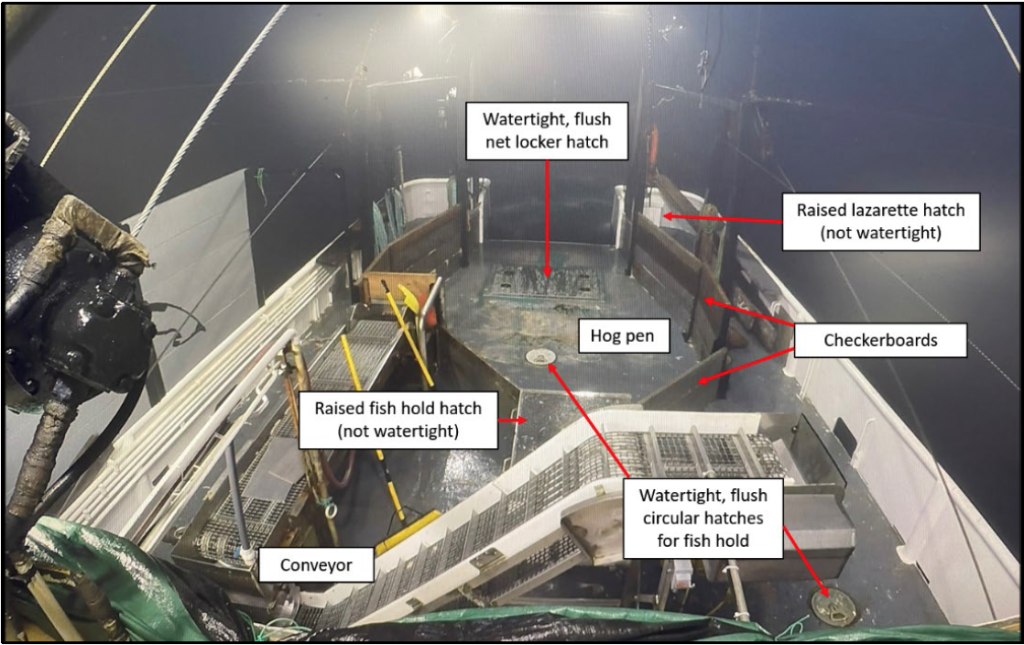Many fishermen will tell you the best part of a successful fishing trip is steaming back to port with the gear stowed and the catch iced down, with nothing to do but grab much-needed sleep, stand a few wheel turns and think about rewarding yourself after you tie up and unload.
However, in those circumstances it’s entirely possible to become too complacent and not respond to emergencies as they develop. The captain and crew of the 74' x 22' Rebecca Mary, a steel stern trawler built in 1983 at Horton Boats in Bayou La Batre, Ala., didn’t fall into that trap.
Just after 9 p.m. on June 16, 2020, after two days of dragging around Atlantis Canyon, some 95 miles south of Nantucket, Mass., the Rebecca Mary began steaming back to New Bedford with 75,000 to 85,000 pounds of illex (shortfin squid) packed in layers of ice in the hold. Skies were clear, winds were from the east at 15 knots and seas were running 3 to 5 feet, according to the report from the National Transportation Safety Board.

Things started going bad around 2:30 a.m. on June 17, when the fish hold sump alarm sounded. A deckhand went to the engine room and started a bilge pump. Back on deck he noticed waves were coming over the port quarter gunwale, and seawater was accumulating over the lazarette hatch.
The deckhand woke the captain who started pumping out the net locker and the lazarette. They then noticed water being discharged from overboard discharge fittings on the starboard side. That’s when the captain woke up the two remaining crewmen, and they all donned survival suits. Just after 4 a.m. — an hour and 39 minutes after the sump pump alarm sounded — the captain made a distress call to the Coast Guard on VHF channel 16 and activated the Rebecca Mary’s EPIRB.
The captain provided updates to the Coast Guard, all the while monitoring the seawater creeping across the deck, while the stern sank deeper. Then just before 5 a.m., the Rebecca Mary began listing to port. The crew threw the life raft canister overboard and tied it off to the port handrail.
Shortly after the life raft inflated, the Rebecca Mary rolled over, ripping into the life raft and deflating it. That’s when the four-man crew jumped overboard, locked arms and waited for a Coast Guard helicopter. The helicopter, launched at 4:46 a.m., arrived at 5:07 and hoisted the crew aboard.
The Rebecca Mary, valued at $375,000, sank and was not recovered; thus it could not be determined if there were hull failures. The National Transportation Safety Board said the probable cause of the flooding and sinking was undetected flooding of the lazarette, likely through a non-watertight raised hatch.
Though the Rebecca Mary was lost, the rapid response of the captain and deckhands to the developing problem, as well as early communication with the Coast Guard, ensured that all the crew survived.







